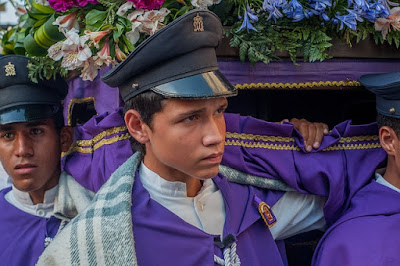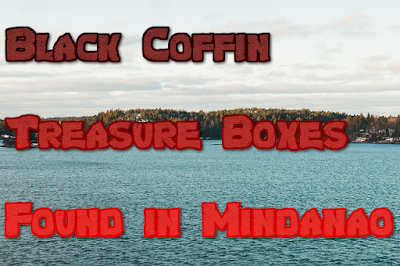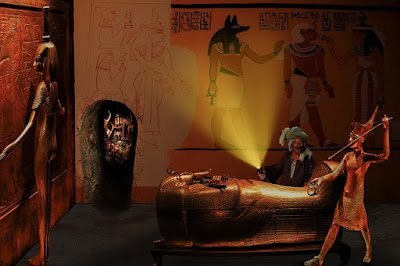Are you the type of person who enjoy and loves visiting the cemeteries?
If you are one among these kind of people then you have to know that you are not alone.
Many individuals actually loves to visit these burial sites because they find the place interestingly beautiful, quite peaceful and calm.
You might be surprised to know that some people even made visiting the cemeteries their hobbies.
Although, other people may find it weird and creepy where they simply couldn't stand visiting a cemetery.
Although, other people may find it weird and creepy where they simply couldn't stand visiting a cemetery.
Some says that they may encounter and attract ghosts or spirits which might follow them back home. All these eerie feeling are probably due to watching too much horror movies.
Here are the following reasons why you should visit a cemetery:
1. Remembering Your Dead Love Ones
The main reason why you should visit a cemetery is actually to remember and pay your respect to your dead love ones.
Here are the following reasons why you should visit a cemetery:
1. Remembering Your Dead Love Ones
The main reason why you should visit a cemetery is actually to remember and pay your respect to your dead love ones.
They can be your grandparents, relatives, friends or anyone who are close to you when they were still alive.
2. Learning About Your Family Tree
In most traditional burial culture, the grave or tomb of a certain individual is often situated next to the grave or tomb of their fellow family members.
2. Learning About Your Family Tree
In most traditional burial culture, the grave or tomb of a certain individual is often situated next to the grave or tomb of their fellow family members.
Thus, visiting the cemetery is the perfect place for your children to know more about their ancestors, older generations or their family history.
3. Remind Us About Our Mortality
When visiting a cemetery, those tombs or graves will remind us about our mortality which means that we won't live forever.
3. Remind Us About Our Mortality
When visiting a cemetery, those tombs or graves will remind us about our mortality which means that we won't live forever.
There will soon be a time that our physical body will be buried on this place later when we die. This will teach us that we should treasure every moments of our lives it's because it's great to be alive.
4. Draw Us Closer to Spirituality
Speaking about mortality, you will draw closer to your spiritual belief. A spiritual belief about the existence of "life-after-death".
5. Quiet and Peaceful Place
If you want a quiet and peaceful place to pass your free-time, you may want to consider visiting a cemetery.
4. Draw Us Closer to Spirituality
Speaking about mortality, you will draw closer to your spiritual belief. A spiritual belief about the existence of "life-after-death".
5. Quiet and Peaceful Place
If you want a quiet and peaceful place to pass your free-time, you may want to consider visiting a cemetery.
Some says that the quietness and peacefulness of the place allows them to fall into a deep trance.
This often makes them able to make connections into their passed love ones remembering all the happy times that they had shared together.
6. Beautiful Place to Visit
Some people visit cemeteries because it is a beautiful place.
6. Beautiful Place to Visit
Some people visit cemeteries because it is a beautiful place.
Due to its beauty, you will feel relax especially when you are to breath the fresh air. All thanks to the caretakers who are maintaining the cleanliness of the place.
7. Honoring Your Dead
Last but not the least is, "honoring your dead or simply the dead people buried on the cemetery". Most people bring them flowers and candles that they left behind.
7. Honoring Your Dead
Last but not the least is, "honoring your dead or simply the dead people buried on the cemetery". Most people bring them flowers and candles that they left behind.
You may be surprised to know that some cultures even offer them some foods on their tombs.
When visiting any cemeteries, proper etiquette must be observed. Although, there is no one enforcing such rule but it is completely bad to be disrespectful on this kind of solemn place.
Here are the following proper cemetery etiquette that must be observe:
1. Respect Everyone
The most important etiquette when you are visiting a cemetery is all about "respect". Everyone must always be reminded that the cemetery is a place to mourn their passed love ones.
2. Maintain a Quiet Environment
Do not shout or talk loud enough when having a conversation to somebody such as on the phone. When you have children along with you, tell them not to play and run around.
Proper Cemetery Etiquette
When visiting any cemeteries, proper etiquette must be observed. Although, there is no one enforcing such rule but it is completely bad to be disrespectful on this kind of solemn place.
Here are the following proper cemetery etiquette that must be observe:
1. Respect Everyone
The most important etiquette when you are visiting a cemetery is all about "respect". Everyone must always be reminded that the cemetery is a place to mourn their passed love ones.
2. Maintain a Quiet Environment
Do not shout or talk loud enough when having a conversation to somebody such as on the phone. When you have children along with you, tell them not to play and run around.
Causing such disturbances is disrespectful to the other mourners.
3. Throw Your Trash in the Proper Place
Cemeteries do have caretakers who are maintaining the cleanliness of the place. But, this shouldn't be the reason why you should just leave your trash at any place.
3. Throw Your Trash in the Proper Place
Cemeteries do have caretakers who are maintaining the cleanliness of the place. But, this shouldn't be the reason why you should just leave your trash at any place.
There should always be a proper garbage can nearby where you can throw your trashes.
4. Be Careful of Moving Objects on the Tombs
When some families visited the cemetery ahead of you, there are chances that they will be leaving objects such as flowers, photos, coins and etc...
4. Be Careful of Moving Objects on the Tombs
When some families visited the cemetery ahead of you, there are chances that they will be leaving objects such as flowers, photos, coins and etc...
If it happens that you got interested to check on one of them, it is important that you have to place them back the way that you originally took them.
5. Don't Damage the Grave Markers
It is just natural that when a grave stone particularly the marker get's old through time, the writings can be too hard to read.
5. Don't Damage the Grave Markers
It is just natural that when a grave stone particularly the marker get's old through time, the writings can be too hard to read.
Due to this reason, the common and wrong practice of what most people do is to rub it. This could actually damage the stone.
So the best method to find the gravestone of your dead is to seek help from the people who are in-charge of the cemetery.
6. Asking Permission to Visit a Cemetery
Cemeteries can actually be considered as "Public" or "Private". If you are visiting a public cemetery then you can visit the place at any time that you want.
6. Asking Permission to Visit a Cemetery
Cemeteries can actually be considered as "Public" or "Private". If you are visiting a public cemetery then you can visit the place at any time that you want.
However, private cemeteries have strict rules when it comes to visiting hours that some even requires asking permission from the person in-charge.

Overall, most people find comfort when visiting cemeteries. It is probably because the place reminds us about our passed love ones with the belief that they are on the safe hands of our Creator.

Overall, most people find comfort when visiting cemeteries. It is probably because the place reminds us about our passed love ones with the belief that they are on the safe hands of our Creator.
And later, when we also die, they will be there waiting for us to be reunited once again.


















